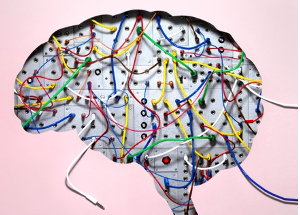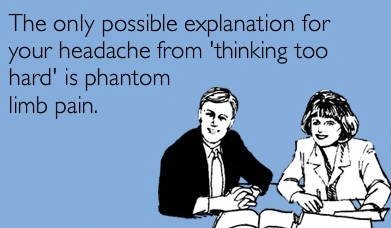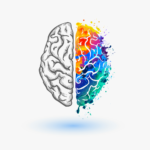
Hi All,
Have you ever heard statements like “You can rewire your brain!” before? In this article, we will dive into the world of neuroplasticity – your brain’s ability to change itself!
Neuroplasticity
What is it, why does it matter, and how can we promote it?
In essence, neuroplasticity is the ability of the brain to change its structure, function, and activity in response to external and internal stimuli. Neuro = brain; plastic = changeable.
For a long time, it was believed that the brain’s structure was hard-wired and fixed once a person reached adulthood. We now know that our brains can change based on our experiences and behaviour – even in old age! This article will cover the scientific background and what we can do to promote neuroplasticity.
What Are Real Life Examples Of Neuroplasticity?
- London cab drivers store detailed mental maps of the city in their memory and were found to have a larger hippocampus (brain area related to memory).
- Musicians typically have 130% more grey matter (the outer layer of the brain) in the auditory cortex, which is the area of the brain processing auditory information.
- Pregnancy and postpartum: the brain of a pregnant woman undergoes significant changes in order to prepare her for motherhood and infant attachment. For example, cortical, limbic, and sensory systems in the brain change and the overall cortical volume decreases.
- Losing a sense: if a person becomes e.g., blind or deaf, neuroplasticity allows the part of the brain that was once responsible for that sense to now serve a new purpose and enhance novel abilities.
- Recovery from brain damage (caused by e.g., injuries or strokes): numerous case studies demonstrated that individuals with brain damage were able to function nearly normally. This was possible because other regions of their brain compensated and started to facilitate functions which they are normally not responsible for.
“Plasticity is the brain’s golden art of adaptation.”
– Dr Wolf, Professor of Neurology
Let’s have a look inside the brain:
The Neuroscience Of Neuroplasticity
Below are the basic terms and definitions so we are all on the same page:
- Neurons are the fundamental building blocks of our brain and nervous system (NS). Neurons transmit information to each other through electrical and chemical signals (neurotransmitters).
- Synapses are the junctions between neurons. Synapses are small gaps between the neurons at which neurotransmitters travel from one neuron to another. (See image below.)
- The reorganisation of neurons is called neuroplasticity (as defined above).
- The growth of new neurons is called neurogenesis.
- Neural pruning is the process where the brain eliminates neurons and synapses which are not being used. In other words, neural connections that are not stimulated and strengthened by experience die off / are ‘pruned’.
- Neurons that wire together, fire together (Hebb’s law): any two cells or systems of cells that are repeatedly active at the same time will tend to become ‘associated’, so that activity in one facilitates activity in the other.

With everything we do, we activate a neural connection in the brain. If we engage repeatedly in the same action, the neural connection becomes strengthened (i.e., synapses and neurons send stronger signals). We memorise, learn, and create new habits. The longer we engage in a certain action/pattern of behaviour, the more prone our system is to make this our default setting (we know this from neurological and behavioural studies).
If we want to trigger our brain to make new or different connections, we need to engage in new forms of behaviour. As mentioned, new neurons can be formed (neurogenesis), or existing neurons and synapses connect differently with each other and reorganise themselves/ become rewired (neuroplasticity).
On the other hand, if we stop using a neural connection, it can die off by the process of neural pruning.
The above examples focus on the impact of our behaviour on the brain. There are other examples of neuroplasticity that happen unconsciously. However, I want to focus on the behavioural part as this is where we can make conscious changes and have the most control.
To conclude, our brain follows our patterns of behaviour to a larger extent than we could scientifically prove for a long time. Turns out, you can teach old dogs new tricks. 🙂
“Everything having to do with human training and education has to be re-examined in light of neuroplasticity”
– Norman Doidge, author of The Brain That Changes Itself
Now, what does this mean for us?
How Can We Promote Neuroplasticiy?
You have probably guessed it. 🙂 Engage in new experiences and embrace novelty!
For example:
- Learning a new language is incredibly beneficial for your brain as it engages many different areas and neural circuits (e.g., areas responsible for language and auditory information processing, memory, and speech production). Multiple studies have shown that knowing multiple languages supports overall brain health, e.g., “bilinguals who come down with Alzheimer’s do so about 4.5 years later than monolinguals” (Dr Thomas Bak, University of Edinburgh).
- Strive to achieve new goals: Quoting Dr Smith (Co-author of the book Unchain Your Brain): “Rewiring requires setting new goals and practising the healthy pursuit of reward while the brain is creating new pathways.”
- Use visualisation: Dr Pascual-Leone (professor of Neurology at Harvard Medical School) claims that mental training and visualisation have the power to change the physical structure of the brain. Reading this is music to my ears after covering the topic of visualisation in last month’s article. J
- Starting small: Use your non-dominant hand next time to execute routine activities e.g., brushing your teeth. This is already a small challenge for your brain and will require leaving the default path.
- When the body moves, the brain grooves: physical activity is important for overall brain health and is suggested to slow down age-related neuronal death in the hippocampus (brain area associated with memory).
- Optimise your sleep: Research claims that chronic insomnia is associated with neuronal death in the hippocampus, while adequate sleep is suggested to enhance neurogenesis.
- Engage in creative activities: Creativity, by definition, is the use of imagination to invent something new. Being creative means leaving the known paths and going new ways – this figure of speech is representative of what happens in the brain when it gets rewired.
Overall, the more plastic our brain is, the easier it is to learn effectively and enhance memory, and cognitive abilities. Learning new skills (e.g., a new instrument) or engaging in new practices (e.g., forming new habits) support our brains in staying fit and making life easier as we are better able to adapt. To add, the term ‘growth mindset’ is often used to describe growth in a psychological or spiritual context – we can now add the neuroscientific context, as we grow new brain paths when engaging in the development of self.
Before we wrap up – if you would like to support my work, here’s a way: Ko-fi.com/neurosciencemusings. In case you choose to do so: THANK YOU!!
Are There Limits To Neuroplasticity?
Yes. I want to stress that not every brain damage is repairable and that there are plenty of studies showing how injuries can significantly alter a person’s personality, overall functioning, and therefore their trajectory of life. Also, developmental science suggests that there are critical developmental stages in childhood in which we develop certain abilities (e.g., binocular vision). If these phases are missed, we cannot catch up and the ability will remain poor.
The point of this article is to show that we have more influence over our brain’s structure and functioning than we previously believed. However, not everything can be fixed. So, take care of your brain. 🙂

Random section*:
This article’s “Random section” is not so random, as I wanted us to look at phantom limb pain and as it turns out, neuroplasticity plays a role in it, too!
[*As a side note for new readers: back when my articles were a monthly publication, each article had a random section at the end with random science knowledge. When creating this website, I took out the section as I want to repurpose the content differently, however, for this article it was relevant so I left it in.]
How Can A Limb That Is Not There Anymore Hurt?
To answer this question, let’s clarify two background points:
- (Physical) Pain is constructed in the brain. What do we mean by that? For example, you accidentally cut your finger when trying to slice an avocado. Your body (i.e., nervous system) picks up on the signal (knife cut skin) and the brain processes that information, which results in you perceiving the pain. The pain is felt in the body however, it is first ‘constructed’ in the brain. This also explains why you do NOT feel pain under anaesthesia, as the anaesthetics stop the nerves from passing signals to the brain.
- The somatosensory cortex is a part of the brain which functions as a body map. Different parts of the somatosensory cortex are dedicated to processing sensory information from specific regions of the body, forming a detailed map (known as the sensory homunculus). The more somatosensory receptors a body part has, the larger its representation. Excerpt below:

Phantom limb pain occurs when there is a mismatch between the perceived and actual body state. When a limb is removed, the body is in a new state right after the operation is completed. However, the brain’s representation of that limb (i.e., the neural circuits in the somatosensory cortex) is not instantaneously adjusted, leading to the mismatch. The reorganisation of cortical maps (i.e., the body’s representation in the brain) takes much longer than the amputation itself. Neuroplasticity allows the brain to change its internal organisation so that the response properties of neurons in the cortex are altered. (It is suggested that six months after a limb loss, pain intensity and frequency decrease. However, 8-10% of people continue to have phantom pain two years after amputation.)

Am I the only one who loves memes so much?
For thoughts and questions, reach me on instagram @neuroscience.musings or via the contact form on here.
Have a great day/night wherever you are!!
Best regards,
Sarah
Resources:
- Keysers, C., & Gazzola, V. (2014). Hebbian learning and predictive mirror neurons for actions, sensations and emotions.Philosophical Transactions of the Royal Society B: Biological Sciences, 369(1644), 20130175.
- Neimann, C., Godde, B., & Voelcker-Rehage, C. (2014). Not only cardiovascular, but also coordinative exercise increases hippocampal volume in older adults.Frontiers in Aging Neuroscience, 6, 170.
- Joo, E. Y., Kim, H., Suh, S., & Hong, S. B. (2014). Hippocampal substructural vulnerability to sleep disturbance and cognitive impairment in patients with chronic primary insomnia: Magnetic resonance imaging morphometry.Sleep, 37, 1189-1198.
- Fišar, Z. (2023). Biological hypotheses, risk factors, and biomarkers of schizophrenia.Progress in Neuro-Psychopharmacology and Biological Psychiatry, 120, 110626.
- Paternina-Die, M., Martínez-García, M., Martín de Blas, D., Noguero, I., Servin-Barthet, C., Pretus, C., … & Carmona, S. (2024). Women’s neuroplasticity during gestation, childbirth and postpartum.Nature Neuroscience, 1-9.
- Pawluski, J. L., Lambert, K. G., & Kinsley, C. H. (2016). Neuroplasticity in the maternal hippocampus: Relation to cognition and effects of repeated stress.Hormones and behavior, 77, 86-97.
- Feldman, D. E., & Brecht, M. (2005). Map plasticity in somatosensory cortex. Science, 310(5749), 810-815.
- https://www.inc.com/will-yakowicz/how-to-rewire-your-brain-to-be-better-leader.html
- https://positivepsychology.com/neuroplasticity/#9-quotes-on-neuroplasticity
- https://hopes.stanford.edu/neuroplasticity/
- https://www.learnfasthq.com/blog/what-is-neuroplasticity-and-how-does-it-impact-education-infographic#:~:text=It%20is%20the%20understanding%20that,his%20contribution%20to%20this%20understanding
- https://www.stroke.org.uk/effects-of-stroke/neuroplasticity-rewiring-the-brain
- https://my.clevelandclinic.org/health/diseases/12092-phantom-limb-pain#:~:text=Phantom%20pain%20symptoms%20may%20be,pain%20two%20years%20after%20amputation.

